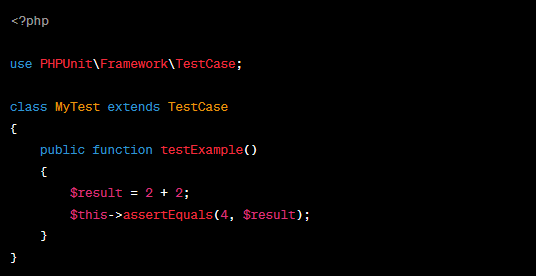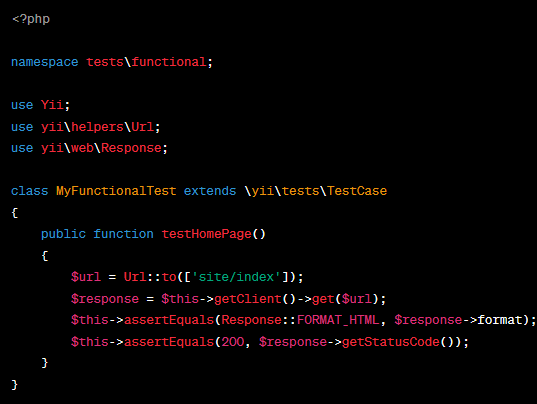Introducing Yii Framework
Yii Framework is a high-performance, free PHP framework used for online application development. It provides a solid basis for developing robust and scalable online applications using the Model-View-Controller (MVC) architectural paradigm. The name “Yii” refers to “Yes, It Is!” and reflects the framework’s goals of simplicity, efficiency, and flexibility. Yii has security techniques to fight against typical online vulnerabilities such as cross-site scripting (XSS), cross-site request forgery (CSRF), and SQL injection attacks. Yii Framework provides a wide range of features and tools to help developers create web apps quickly.
Debugging and testing are critical aspects of the development process for identifying and resolving issues before they affect end users. In the context of Yii2 Framework, a sophisticated PHP framework, we have access to an array of tools and strategies that might assist us in ensuring the quality of our code.
Debugging in the Yii2 Framework
Debugging is the process of locating and correcting flaws or unexpected behaviors in code. The Yii2 Framework includes powerful debugging features that make this procedure more efficient and effective. Some of the primary debugging features provided by the Yii2 Framework are as follows:
Logging:
Yii offers a robust logging framework that is highly flexible and extensible. Yii2 offers a configurable logging framework that enables developers to log and examine application activity. Utilizing Yii2’s logging features allows you to record important information like error messages, stack traces, and performance data, which are extremely helpful for debugging and locating the source of problems.
The following procedures must be followed in order to use the Yii logging framework:
1. Place log messages throughout the code;
2. Set up log targets in the application setup to filter and export log messages.
3. Check the filtered log messages exported by various targets (such as the Yii debugger).

Yii::info(), Yii::error(), and Yii::warning() are logging methods offered by the Yii Framework in the preceding example. These methods allow to log messages at various log levels.

Configuration for file-based logging
Debug Toolbar:
The Yii2 Framework has a useful debug toolbar that gives users immediate access to information about how the application is
being executed. The toolbar shows details on database searches, server requests, code execution, and more. You can use it to swiftly identify any irregularities and enhance the performance of your application.

The Debug Toolbar can be enabled in the preceding example by setting the YII_ENV constant to ‘dev’ and declaring the YII_DEBUG constant true. This guarantees that the application operate in the development environment and that the Debug Toolbar appears. Once enabled and configured, the Debug Toolbar can be viewed by simply typing the application’s URL into a web browser. The Debug Toolbar, displayed at the top or bottom of a website, contains numerous information and tools for troubleshooting and profiling the program.
Error Handling
Yii has a sophisticated error handling framework that allows you to design error pages and smoothly handle a variety of problems. You can specify error handling actions such as displaying descriptive error messages during development and user-friendly error pages in production to provide a consistent user experience. By default, the error handler is turned on. You can disable it by making the constant YII_ENABLE_ERROR_HANDLER false in the application’s entry script.

In the above example, error handling is set in the main configuration file (config/web.php or config/main.php). The ‘errorHandler’ component is in charge of handling exceptions and errors in the Yii Framework. The property ‘errorAction’ is set to site/error,’ which specifies the path to the error action. When mistakes occur, the error action takes charge of generating customized error pages or performing certain actions.
Yii Framework Testing
Testing is a crucial element of the development process to make sure that your application operates as expected and meets the set criteria. Yii Framework provides a good framework for developing unit tests, functional tests, and acceptance tests. Yii provides the following testing features:
Integration with PHPUnit:
Yii integrates without a hitch with PHPUnit, a well-liked testing framework for PHP. Unit tests for specific Yii application classes and components can be written using PHPUnit. These tests assist in verifying the behavior of the code at a detailed level, ensuring that each component operates properly.
Install PHPUnit:

Create a Unit Test Class:

Run The Tests:

Functional Testing

Yii offers functional testing, which entails modeling user interactions and confirming expected results. You may mimic HTTP requests, fill out forms, and conduct other operations on your application with Yii’s built-in capabilities. This allows you to automate testing scenarios and check your application’s overall behavior.
Code Coverage Analysis:
Yii provides code coverage analysis tools to assist you in determining how much of your code base is covered by tests. This data is useful for identifying sections of your application that may require more testing. You can boost your application’s reliability and stability by aiming for high code coverage.Code coverage analysis can help you find sections of your Yii application’s codebase that are not covered by tests. It provides insights into the effectiveness of your test suite and assists you in improving test coverage for better code quality.
- Install Xdebug
- Configure PHPUnit for code coverage
- Run PHPUnit with code coverage analysis
- Analyze the code coverage report
In this blog post, we discussed the necessity of debugging and testing in the Yii Framework for ensuring high-quality code. Yii provides a comprehensive collection of debugging tools, including logging, a debug toolbar, and error handling techniques to allow rapid debugging and issue resolution. Additionally, Yii enables functional testing and code coverage analysis as well as easy integration with PHP Unit for unit testing. By utilizing these features, you may improve the quality and stability of your Yii apps while providing a better user experience.
Remember that spending time debugging and testing pays dividends in the long term by decreasing problems, improving code maintainability, and improving the overall quality of your Yii applications.

